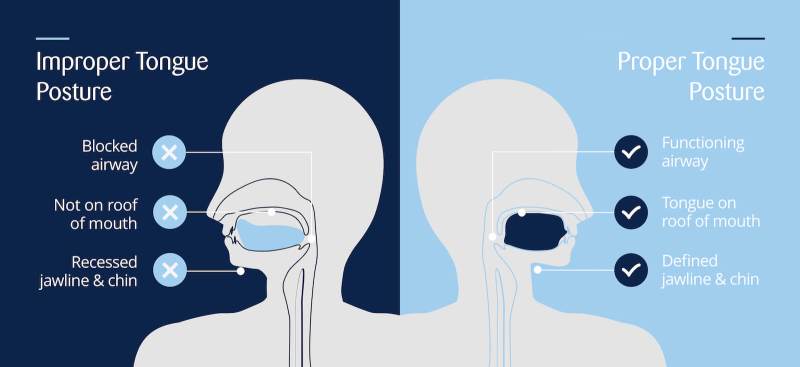
Face shapes are a major factor in your overall look. It’s no secret that a strong jaw and sculpted cheeks are highly desirable, but most people don’t naturally have these features. Those with more round, undefined faces might resign themselves to working with what they have. After all, the shape of one’s face is primarily the result of bone structure and genetics. However, did you know that you can actually change your face shape by sharpening your features with natural, non-surgical methods?
There are several lifestyle changes, exercises, and tools you can try to change your face shape. They range from fairly easy adjustments to more involved lifestyle changes. Many of these options work fairly rapidly when implemented, too. The best news? None of the following will involve going under the knife. Read on to learn more about how to change face shape naturally.

Lifestyle, diet, and working out
Your overall wellness and lifestyle can affect the appearance of your face. If you have a poor diet and aren’t very active, you can gain excess weight in the face like in the rest of your body. This can hide the contours of your face and make it seem like your facial structure is rounder than it actually is.
When you prioritize your overall health, you’ll notice that your face will also slim down over time. There are several lifestyle changes you can implement that will target the fat on your face, including:
- Reducing salt intake
- Reducing alcohol consumption
- Drinking more water
- Focusing on cardio
- Sleeping more
- Eating less processed food

Mewing
When you’re trying to find out how to change the shape of your face, mewing is another strategy.
About 50 years ago, British professor John Mew and his son, Dr. Mike Mew, found that the way the tongue rests in the mouth and how often the mouth is open can factor into a person’s facial structure. This can impact the way a person’s face appears over time. The duo went on to create a facial exercise called “mewing.”
Mewing is the act of adjusting your oral posture and implementing behavioral changes to retain or improve the structural appearance of your face. Proponents of the exercise claim that it can not only help tone the face, but it can also help alleviate oral pain and even better align the teeth.
This exercise has three components:
- Keeping the mouth closed
- Keeping the teeth together
- Keeping the tongue on the roof of the mouth
Chewing hard foods that help work the jaw, as well as sleeping with the mouth closed, are also helpful exercises associated with mewing.
Some claim that when implemented consistently, mewing can prevent facial sagging. The aim is to activate the horizontal muscles in your face and tighten up the facial structure. Changes can happen in as little as a couple of months. While these claims aren’t backed by scientific studies, there’s a lot of anecdotal evidence that mewing is effective.
Mewing is easier to implement for younger people because their bones are still malleable, and it’s not as difficult to pick up new behaviors. This method can be a difficult adjustment for some older individuals if they’re not used to it. A lot of people tend to breathe through their mouths, not their noses. This leads to a habit of keeping the jaw slack, which can cause the face to grow longer and the teeth to become misaligned.

Mouth taping
Mouth taping is a great tool for those hoping to give mewing a shot. As if it isn’t already hard enough to adjust the facial posture during your waking hours, sleeping correctly can be even more challenging. If you’re accustomed to sleeping with your mouth open, it can be very difficult to make the switch through sheer willpower alone.
One way to keep the mouth closed during sleep is to physically tape it shut. This forces you to breathe through the nose instead. As a result, the angle of the palate and the tongue can change. Not only can this help change the facial structure, but it can also lead to a host of other benefits, such as reduced snoring and improved quality of sleep.
If you want to give mouth taping a shot, be sure to use porous tape meant for the skin. Tape such as duct tape may irritate your lips. Affix the tape to the upper and lower lips and enjoy the benefits!

Beard shaping
Not looking for a major lifestyle change? Then consider making a simple adjustment to your beard grooming. You may be trimming your beard in a way that’s not very flattering to your face shape. Figuring out the most flattering beard shape for your face shape can make a world of difference in your overall appearance.
First, determine what face shape you have. There is a range of shapes, from triangle shaped to heart shaped. In general, you will fall into either a fuller face or a more slender face. If you have a round face, consider keeping your beard a bit fuller. If you have a more slender face shape, a more trimmed, streamlined beard will highlight your features best. Either way, be sure to remove hair from above the beard line and define the neck with a precise trimmer or razor.

Lymphatic drainage massage
Lymph nodes are found throughout the body. With the help of special white blood cells called lymphocytes, they work to eliminate toxins, bacteria, and viruses from the body. While this is a necessary and beneficial process, lymph nodes that drain slowly can cause swelling. Lymphatic drainage massages are a way to optimize the natural draining process.
Acts such as the Vodder lymphatic drainage method help release tension in the muscle and connective tissue of the face, neck, and head. It helps reduce puffiness in the face and other areas of the body. Lymphatic massages can also encourage healthy cell production, boost circulation, and reduce water retention. This simple five-minute addition to your daily routine can help sharpen your face shape in about a month.

How can I determine my face shape?
If you’re wondering just how to determine exactly what face shape you have, there’s an easy to determine that. According to the grooming website, Mens Haircuts. you need some basic tools:
- A mirror
- A measuring tape
- Paper and pen or pencil to write down measurements
First, determine how wide your forehead is by running a finger from both of your outside eyebrow tips to the point halfway between your temple and your hairline and measuring the distance between both points.
Then, determine the width of your cheekbones. Do this by measuring from where you first feel the bone from the corner of your eye to the same point on the other side — the line should go approximately across the bridge of your nose.
To measure your jawline, find the area beneath your ear where you feel your pulse and measure from there to the tip of your chin. There’s no need to do this on both sides, just multiply the measurement by 2. Then measure the length of your face from your hairline to the tip of your chin.
Looking at those measurements will help you to determine which of the following face shapes you have:
- Diamond – Generally has a narrow chin and forehead while the cheekbones are the widest point.
- Heart-shaped – A heart-shaped face has a wide forehead that curves at the cheekbones before coming to a narrow chin.
- Oblong – Has a wide forehead as well as wide cheekbones, but is generally longer than it is wide.
- Oval – Similar to an oblong face, it is more curved, and it also has a more rounded jawline.
- Round – Just like it sounds, it’s a curved face where the length and width are just about the same.
- Square – Also just like it sounds, the cheeks and the jawbone are just about the same width with a straight jawline.
- Triangle – Has a wide forehead and cheekbones that taper down to a smaller, and generally pointier chin.



